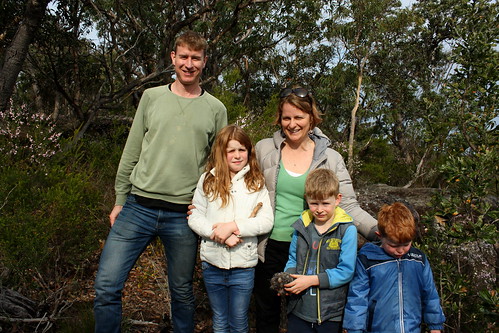For fathers day day this year the family took a trip back to Muogamarra Nature Reserve. Muogamarra is located about an hour north of Sydney just off the old Pacific highway past Cowan. Visiting is a bit of a treat as the reserve is only open to the public for 6 weeks per year. It’s closed at other times to protect sensitive natural and cultural heritage areas.
It rained a bit on the way up but by the time we got there it had cleared. much better than last year. We opted to do the point loop trail. Even though we’d done it before it was the best suited for the time we had. Also one of the Nation Parks and Wildlife ladies said that the wildflowers were especially stunning this year and could not be missed! The point loop is an easy 2km loop with a lookout over the Hawkesbury half way along.
The flowers didn’t disappoint, there were seas of yellow bush peas and pink wax flowers. Also a stunning Waratah by the side of the trail, a much better specimen than the one we saw last year.


We had a packed lunch at the lookout, the view was great, it looks north towards the Hawkesbury over an ancient maar volcano. It would have been a relaxing if it wasn’t for the kids antagonizing each other, running toward the cliff edge and destroying and hacking at the bush in front of the Nation Parks staff.

Next year I’d really like to take the crater walk down into the old volcano, it’s a longer walk but I’m sure the family could do it, we just need to get away early in the morning.










